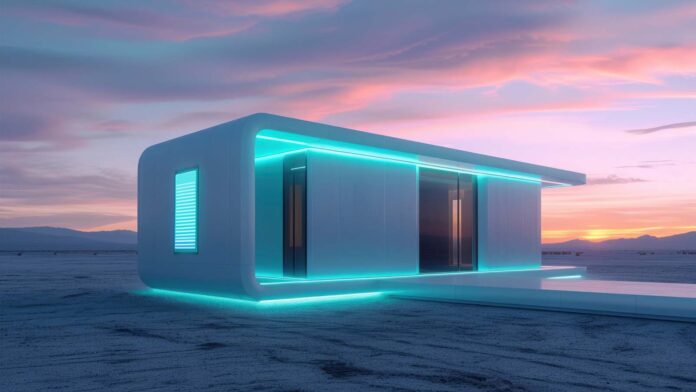Two sections on this site focus on construction and renewable energy. However, it’s rare for the two to converge in a single technological breakthrough. The innovative sustainable concrete proposed at MIT is heading in that direction. This new material can store energy, allowing us to imagine buildings as giant batteries that store renewable energy from solar panels on roofs and facades or even windows with photovoltaic glass. In other words, the potential for energy self-sufficient homes. In this article, we discuss this technology and its applications.
Towards sustainable concrete
Since Roman times, concrete has been the bedrock of our civilization. It’s said to be the second most consumed material on the planet after water. However, it requires cement as a basic element. Cement, in turn, is mainly composed of clinker, produced through a thermal process of calcining limestone and clay, which emits carbon dioxide.
For this reason, alternatives are being explored to limit clinker use and thus reduce carbon emissions during concrete production. But this isn’t the only way to achieve sustainable concrete.
Another alternative is functional concretes—materials with properties that indirectly enhance their sustainability and reduce their environmental impact. For instance, self-repairing concrete with greater durability would be more sustainable. So would concrete capable of absorbing atmospheric CO2. The case in point is another functional concrete, theoretically turning buildings and infrastructure into renewable energy storage facilities, contributing to the decarbonization of the economy.
This approach has been explored in recent years with projects like NewSOL, an ACCIONA initiative that used concrete blocks as batteries for solar thermal plants.
MIT’s concrete-battery
So, what does this new sustainable concrete consist of? It’s a material capable of storing energy for short periods. The MIT engineering team used common materials such as cement, water, and carbon black to achieve this.
Carbon black, traditionally used in ink manufacturing, is integrated into the cement to form fractal-like branched structures that exponentially increase the internal conductive surface area, enabling rapid charging and discharging of energy.
The result is a concrete “supercapacitor” that can transform structural elements of houses, like walls or foundations, into battery-like components capable of storing renewable energy. This technology can store up to ten kilowatt-hours for every forty-five cubic meters of material, enough for the daily consumption of an average home or to contribute to the stability of the electricity grid.
Cement supercapacitors can charge and discharge much faster than conventional batteries, providing immediate energy availability when needed. Thus, while not a replacement for existing batteries, it represents a significant step forward in the transition to renewable energy sources like solar and wind, which produce energy intermittently.
If industrialized, we could see houses and buildings in remote areas becoming completely autonomous thanks to solar panels connected to these concrete supercapacitors. We might also envision roads capable of wirelessly recharging electric vehicles while on the move.
However, like any supercapacitor, MIT’s technology doesn’t guarantee a stable electricity supply but offers the potential to cover specific periods when a household runs out of power.
Other examples of sustainable concrete
As noted earlier, some functional concretes are paving the way for more sustainable alternatives with less environmental impact. An example is the self-repairing material recently presented by MIT. Researchers at the U.S. technological institute have created a material that, like plants, uses carbon dioxide from the air to grow and self-repair.
This synthetic polymer, composed of plant-derived chloroplasts and aminopropyl methacrylamide, reacts with light and CO2, allowing the material to strengthen and repair cracks without human intervention. By combining biological and synthetic components, a gel is created that solidifies and repairs cracks when exposed to light and air.
The new sustainable concrete not only promises to extend the life cycle of buildings and reduce natural resource consumption but also significantly reduces carbon dioxide in the atmosphere by utilizing CO2 in its growth process. The researchers’ goal is to use synthetic chloroplasts to extend the material’s life and enable large-scale production.
If you want to learn about other materials like MIT’s sustainable concrete, subscribe to our newsletter at the bottom of this page. You’ll receive content on construction, renewable energies, 3D printing, artificial intelligence, and robotics, among other topics.
Source:




